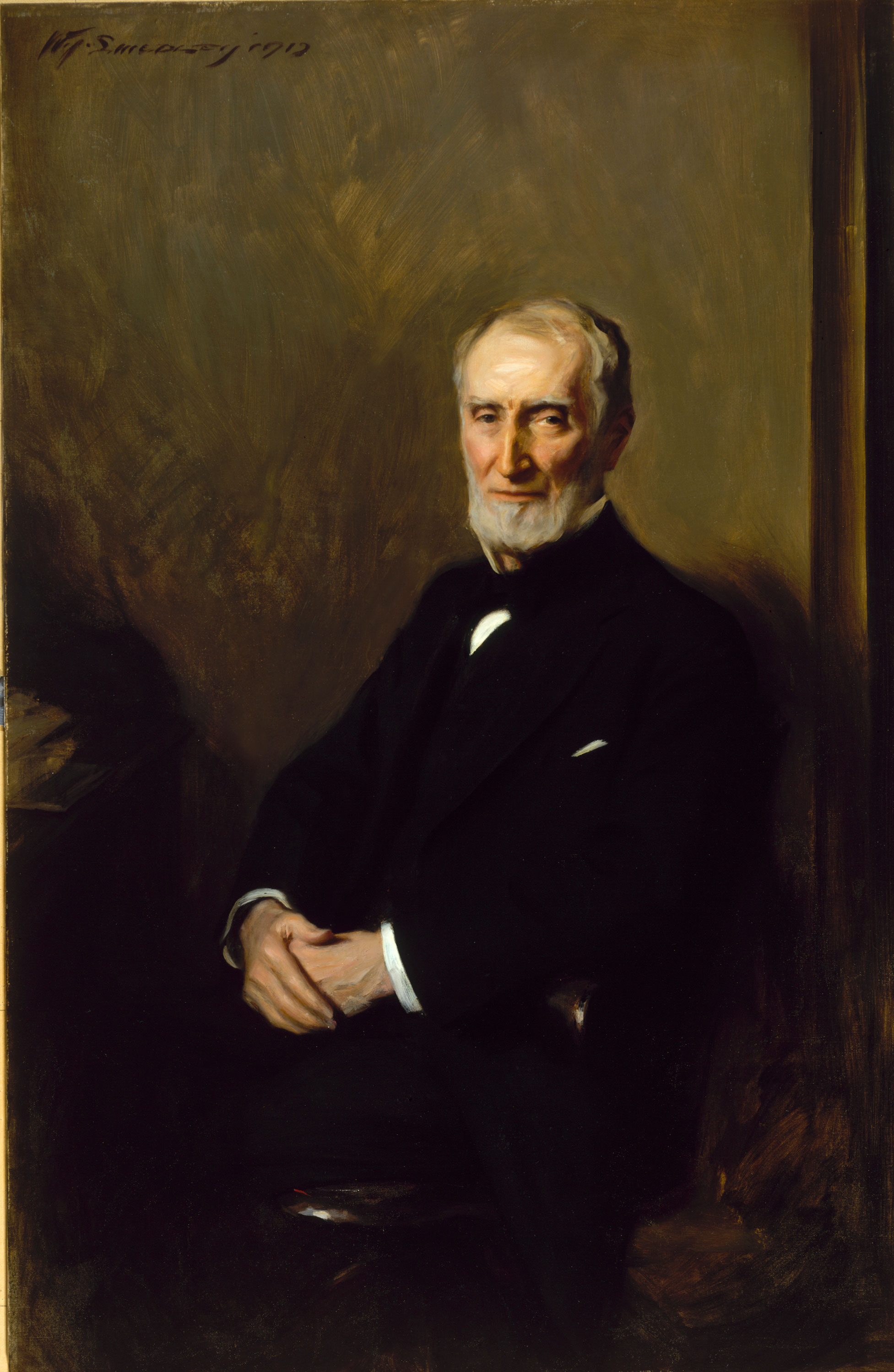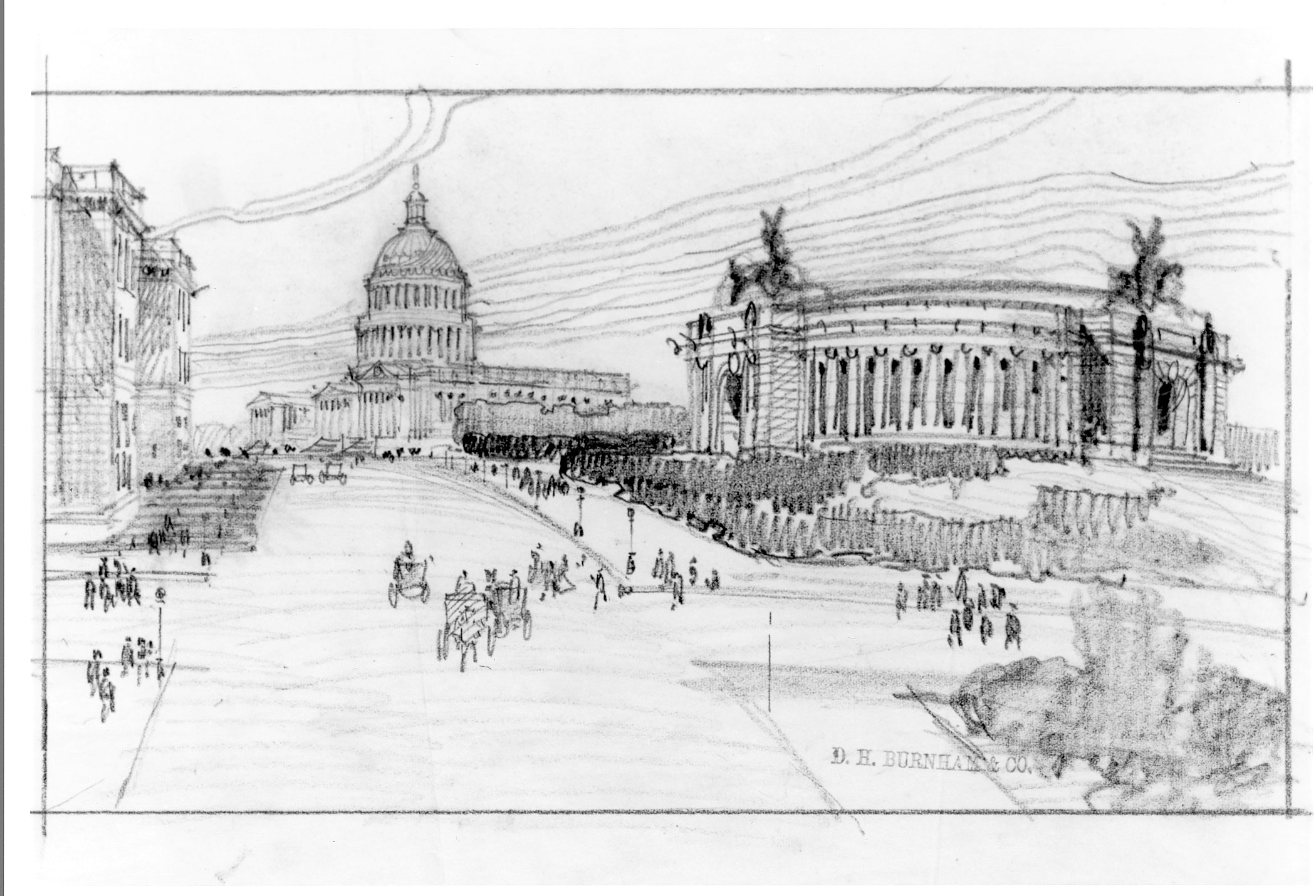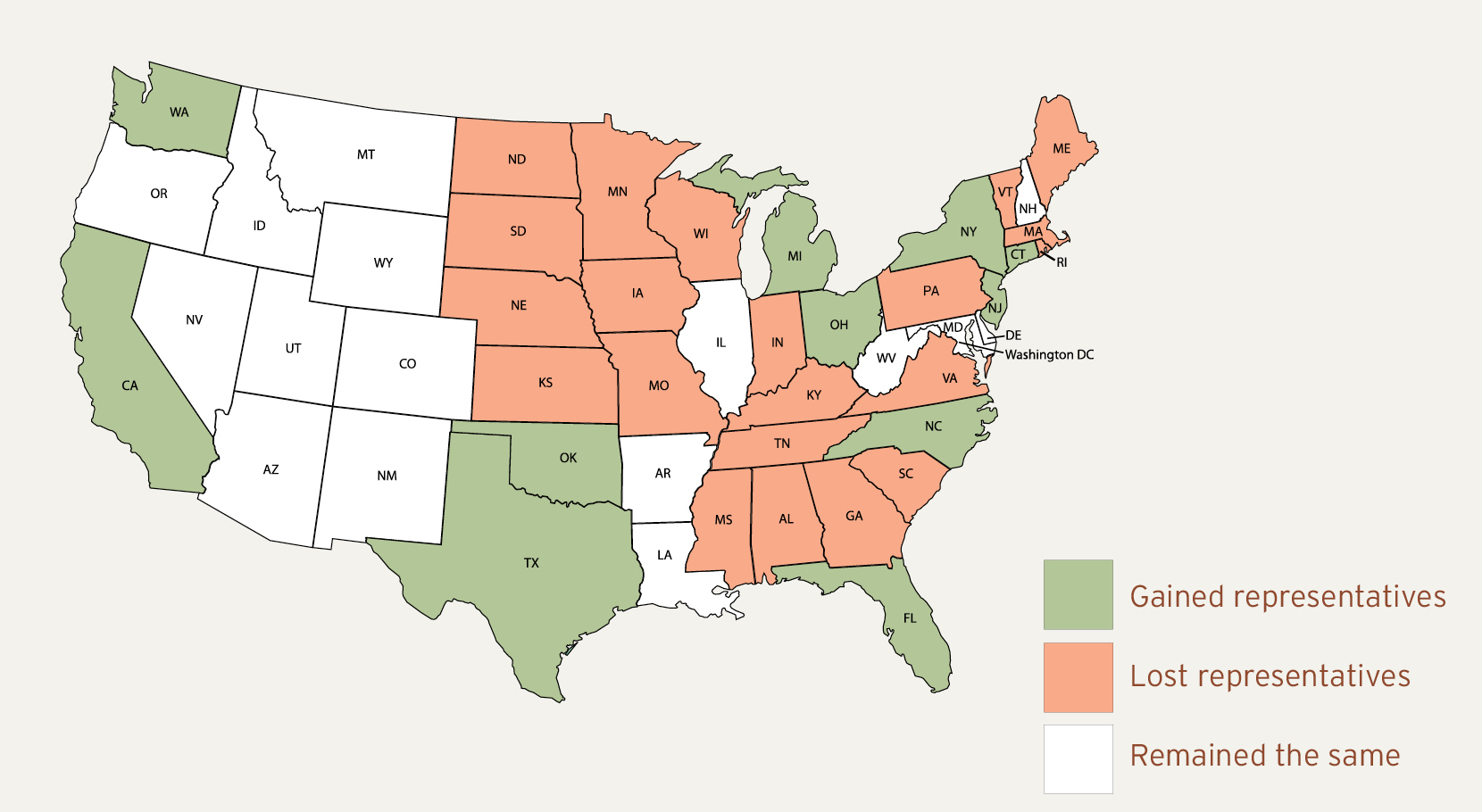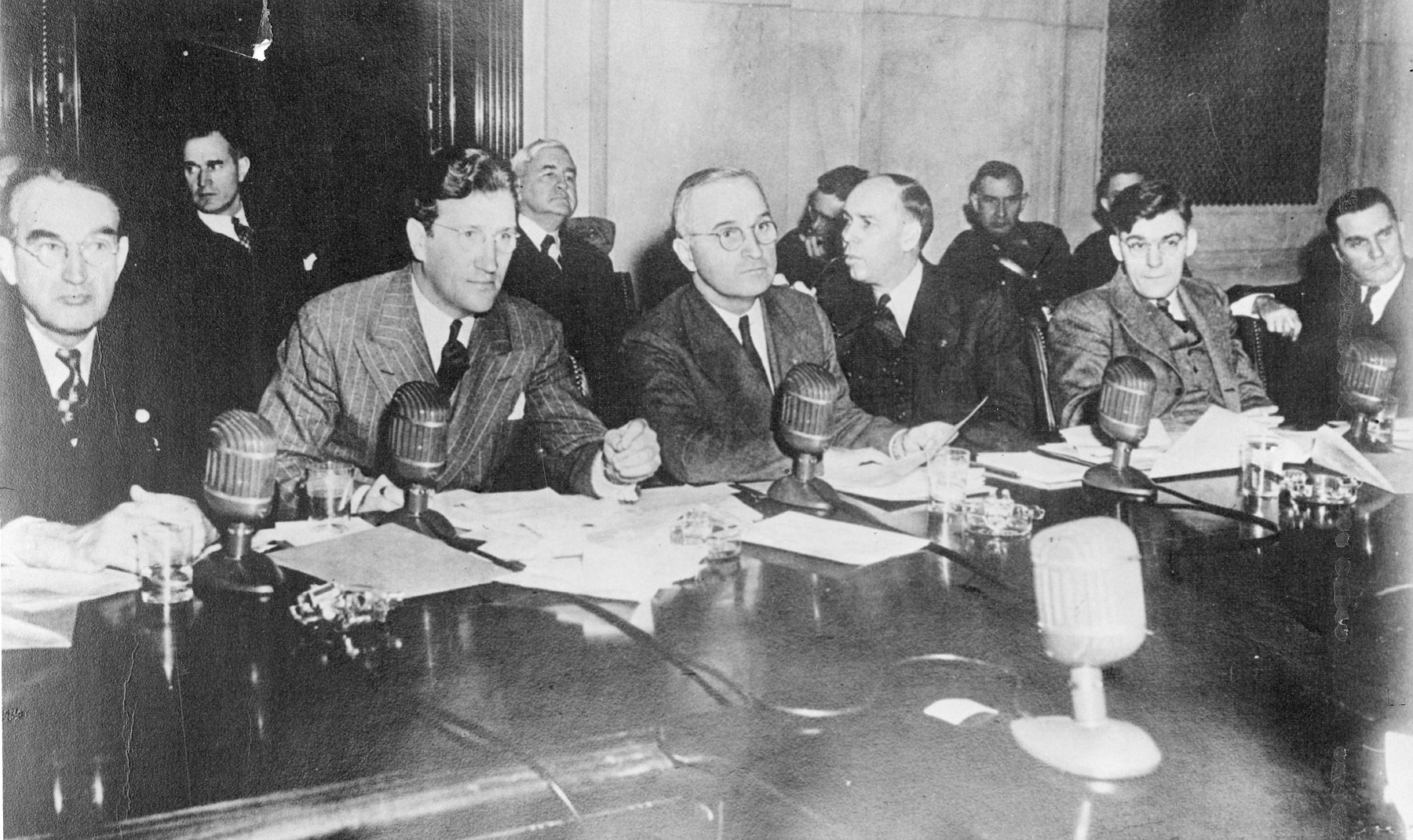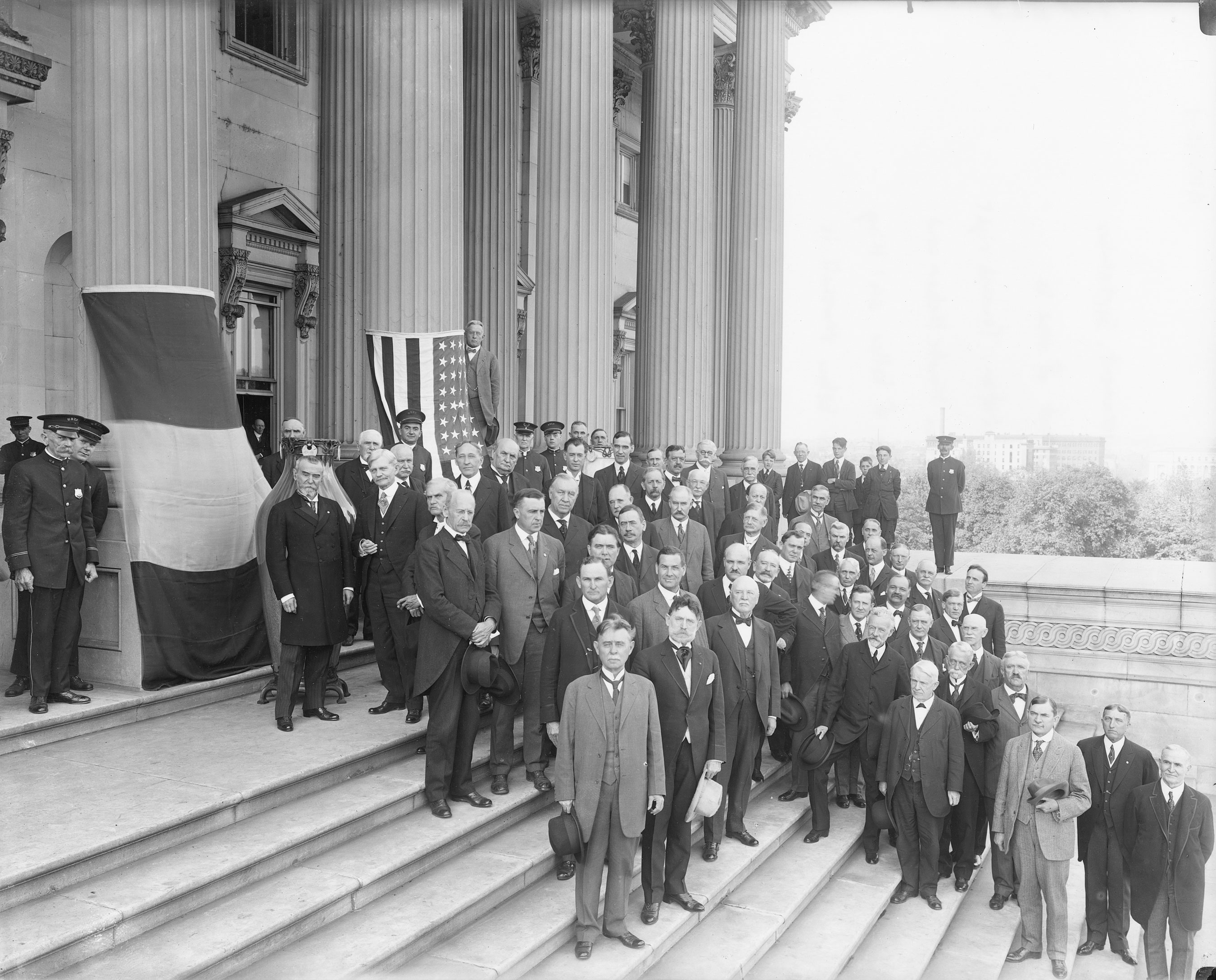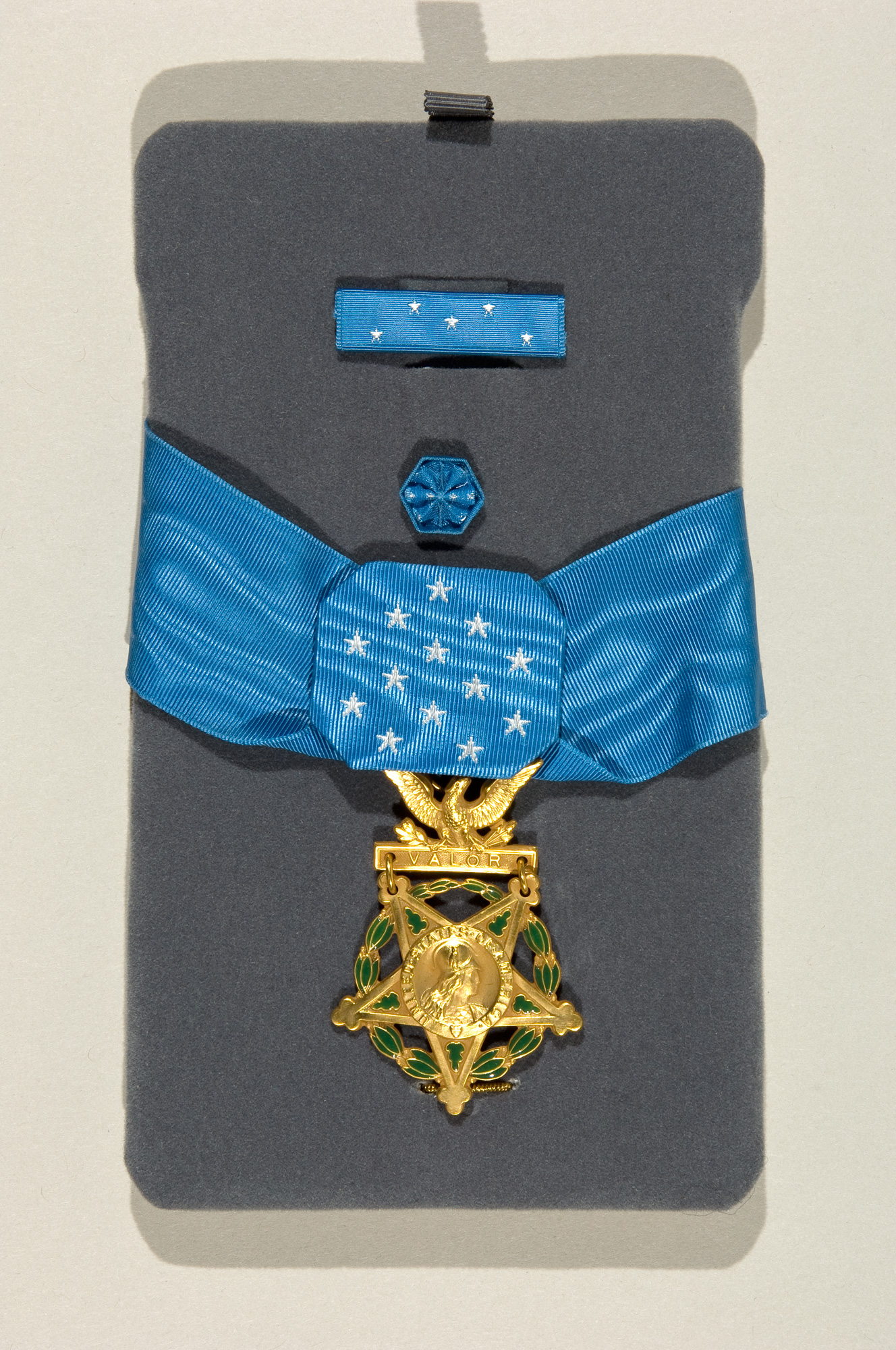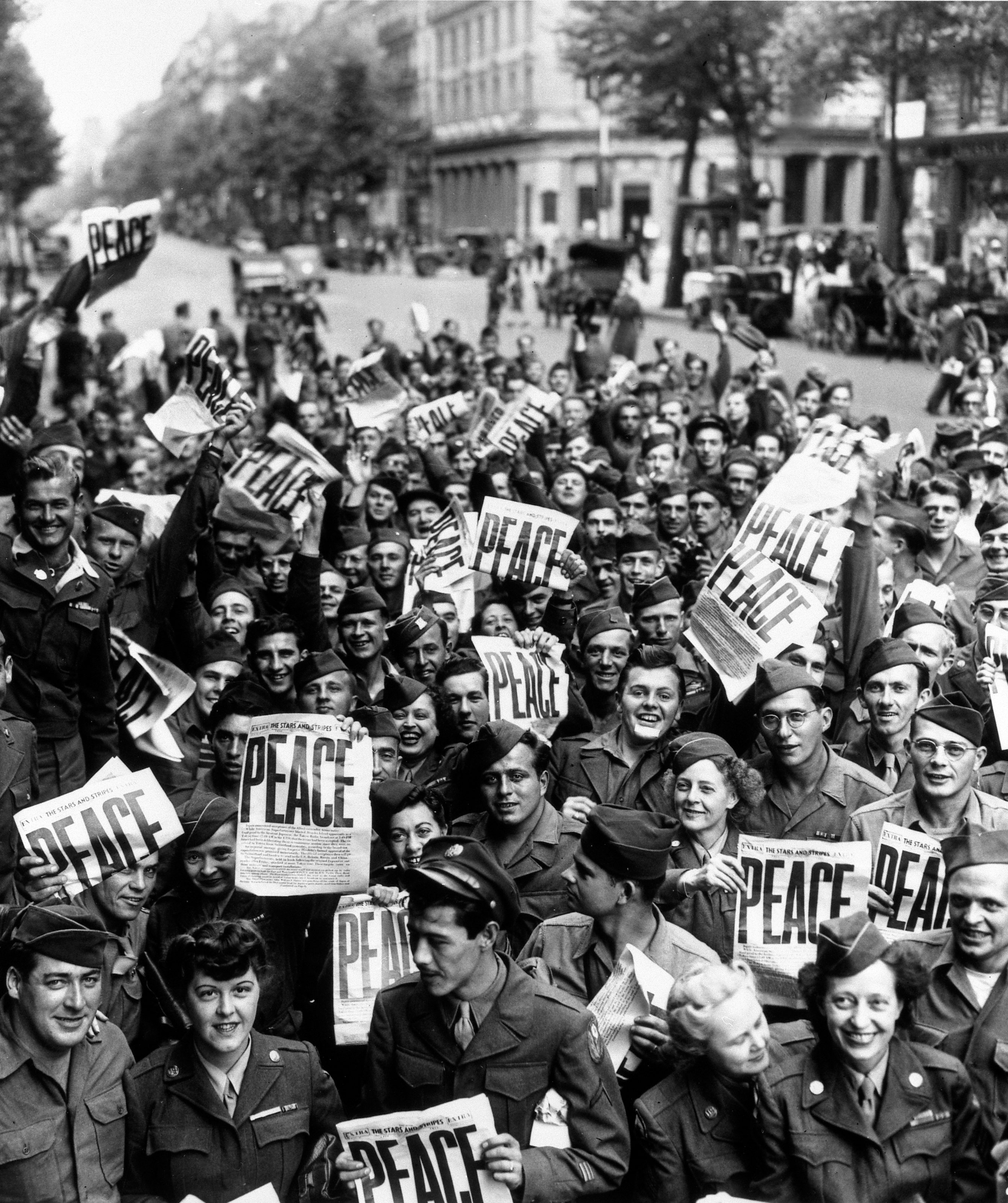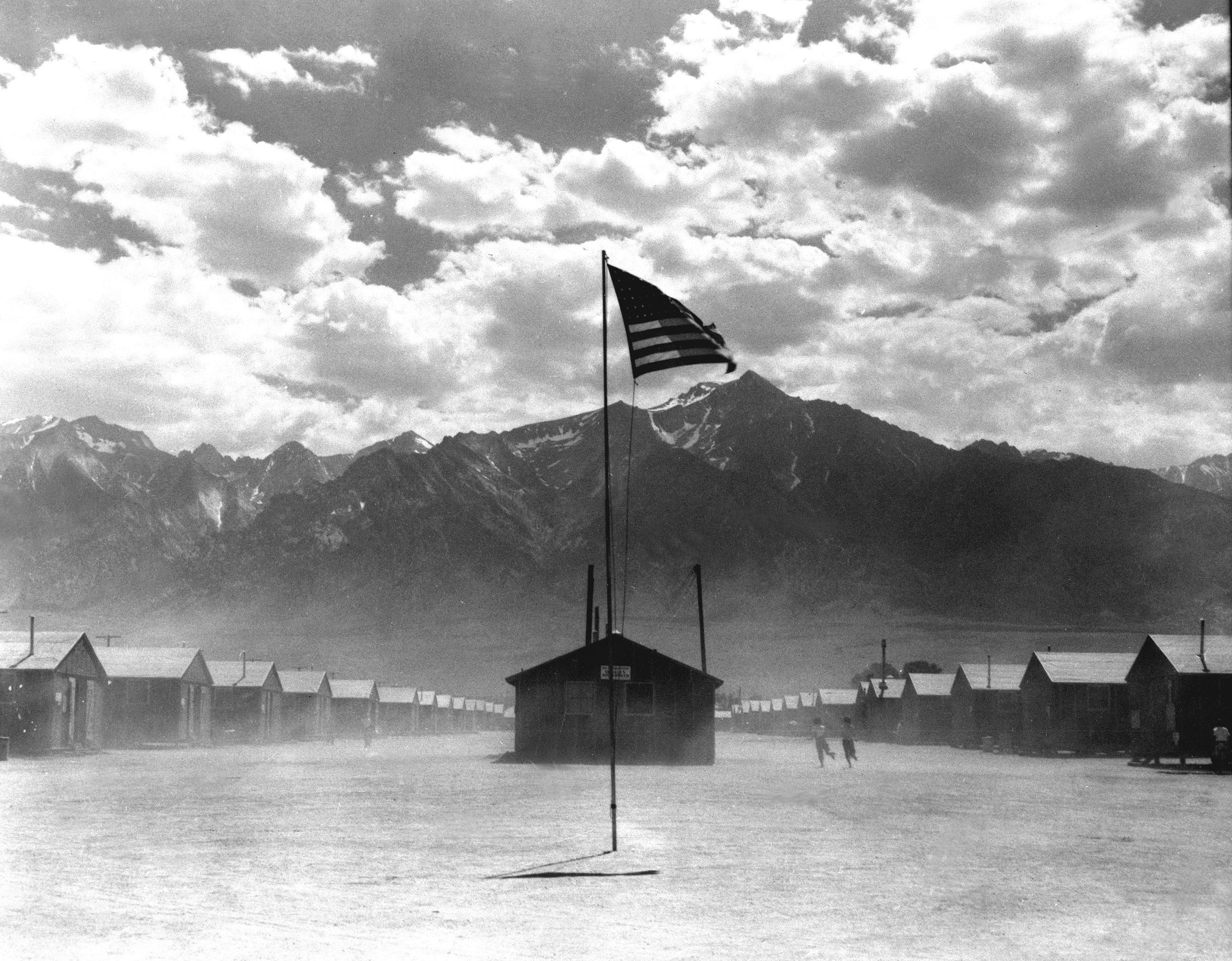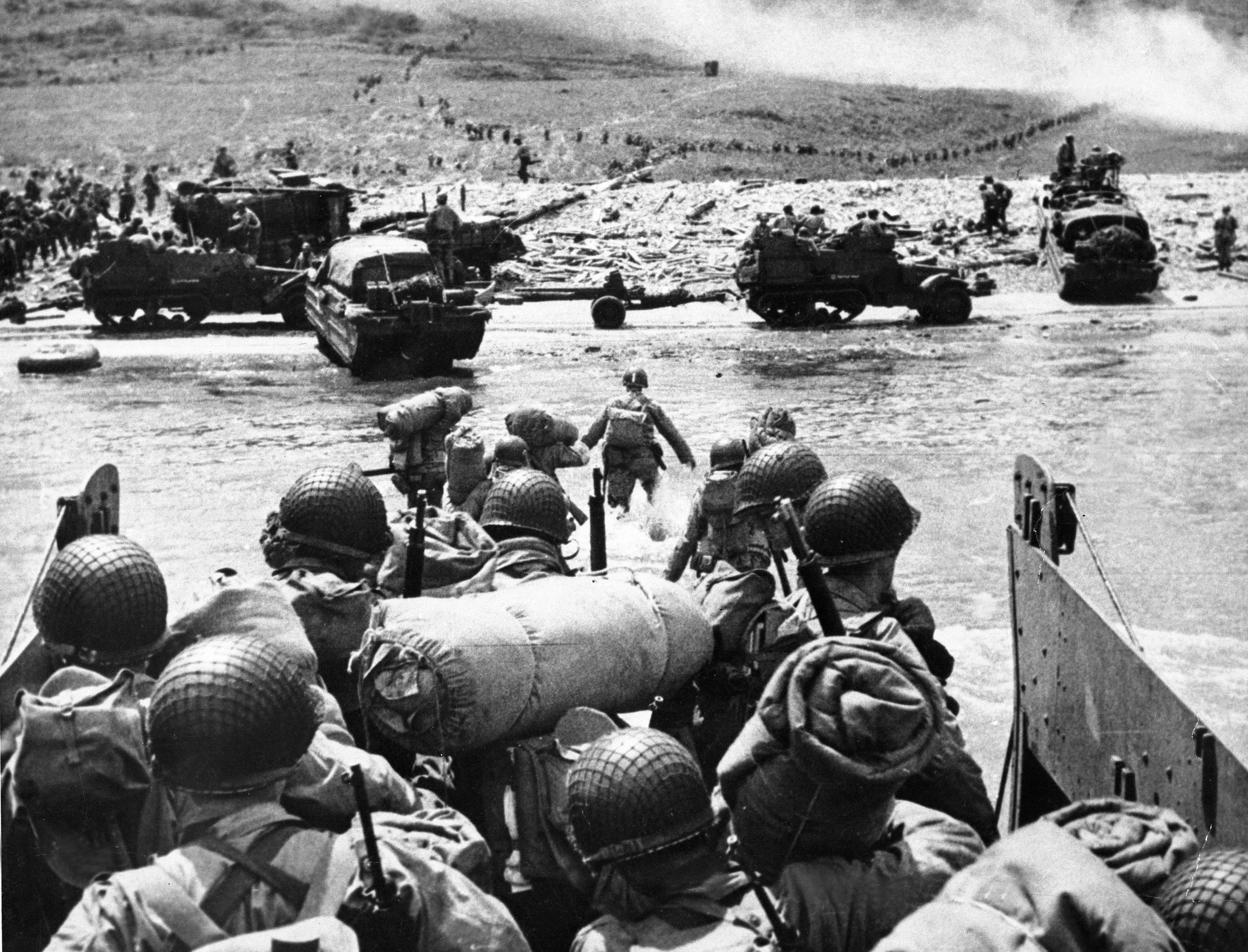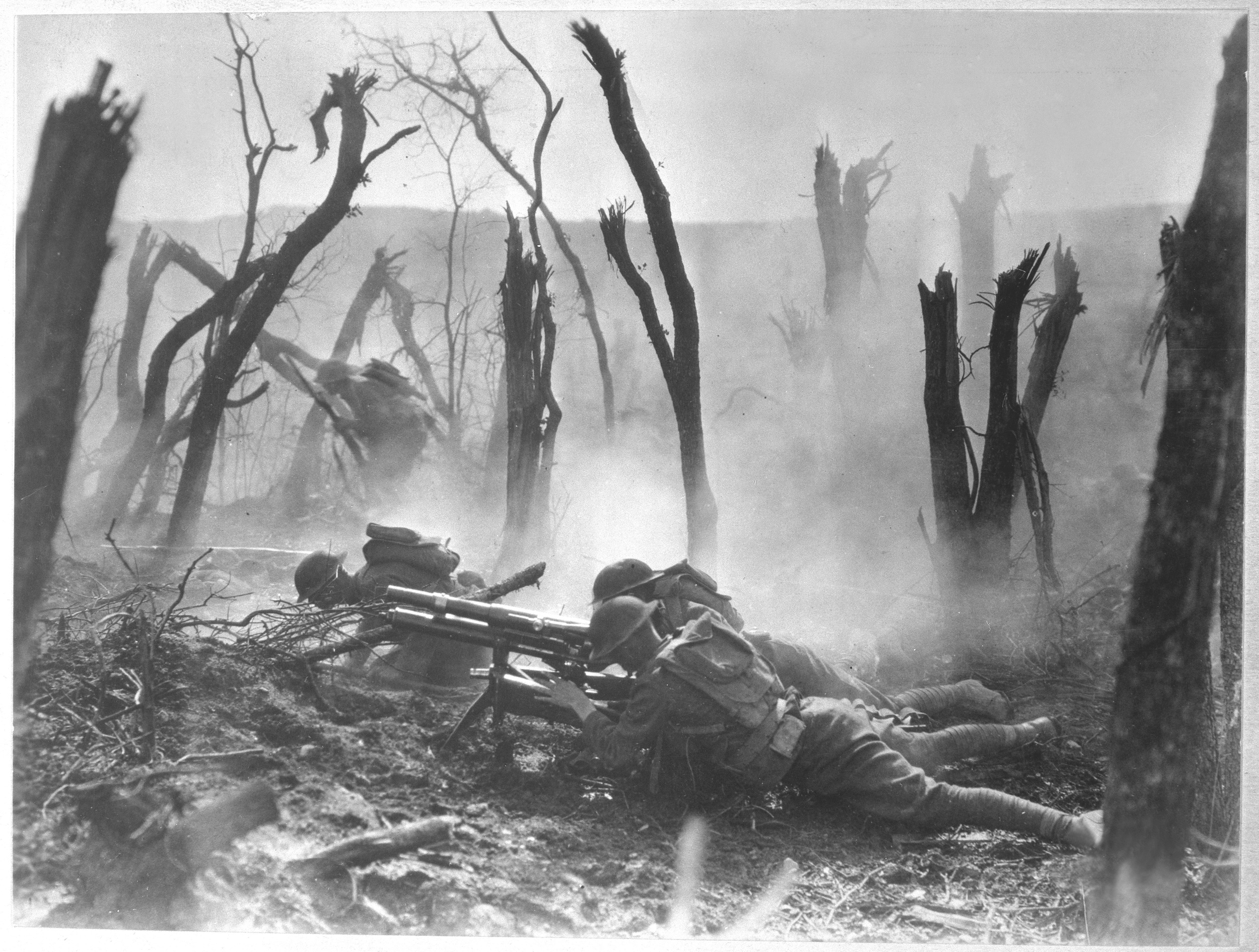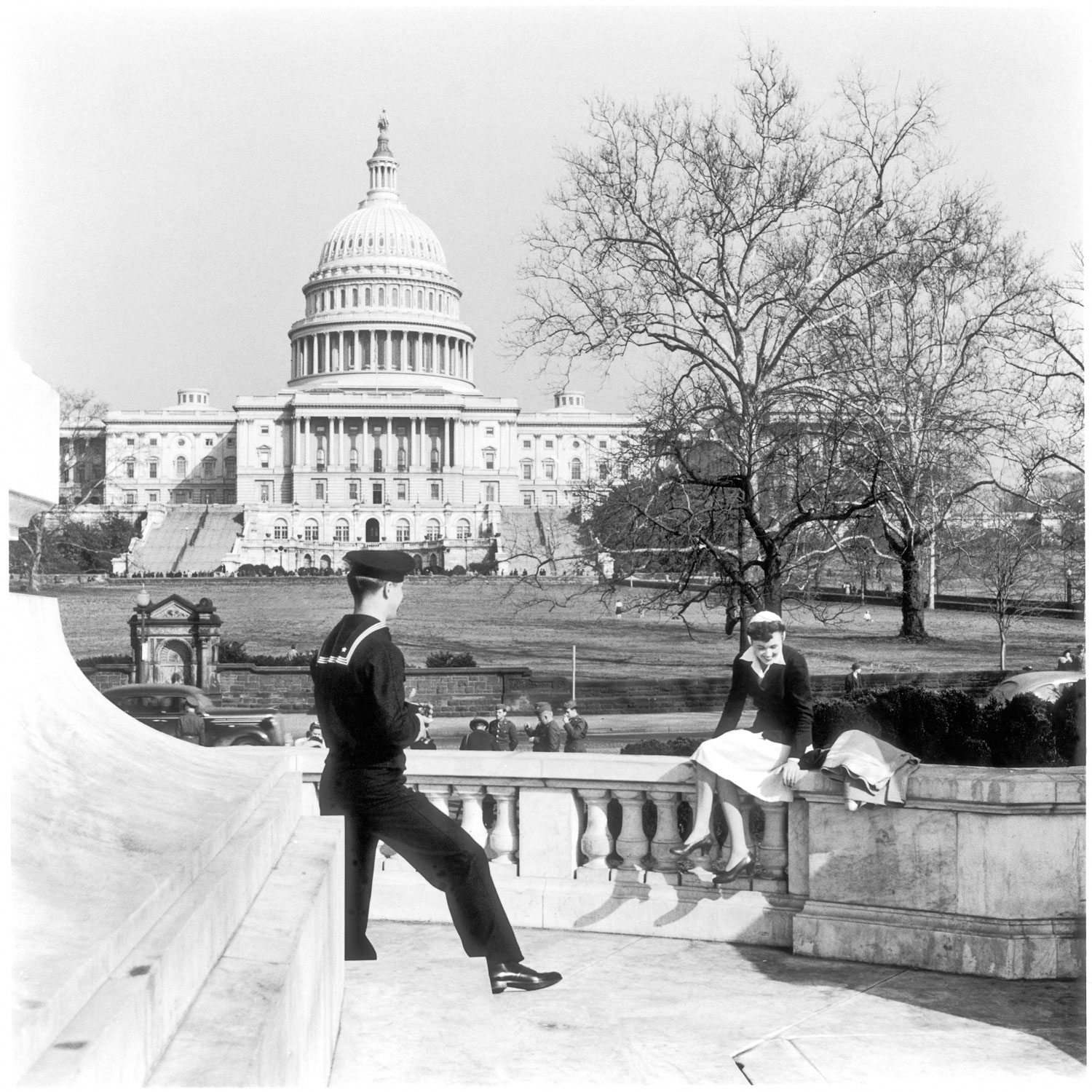Timeline 1913-1945
Most Americans greeted the 20th century with optimism. The early decades saw economic growth and the expansion of democracy as women gained the vote. But two world wars, the Great Depression, and the nuclear age later tested such confidence.
World War I brought a new global perspective. It shifted attention from economic growth and expanding democratic institutions at home to the nation’s place in the larger world. When the war ended in 1918, Congress debated America’s role in global peacekeeping. Disputes with the president, and a postwar absence of public support for further international involvement, kept the Senate from approving U.S. participation in the League of Nations. After the devastation of World War II, this view changed, and Congress supported the establishment of the United Nations and joint mutual defense organizations such as the North Atlantic Treaty Organization. At home, Congress addressed the crisis of the Great Depression, beginning with an outpouring of economic recovery legislation in the first 100 days of its 1933 session.
Throughout these great transformations, the Capitol itself remained unchanged—although its campus grew with the addition of six new buildings.


